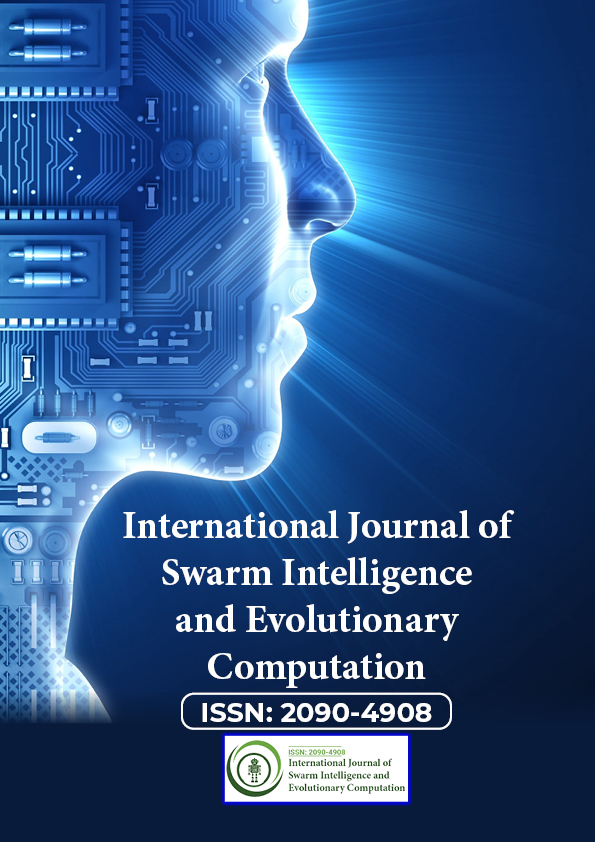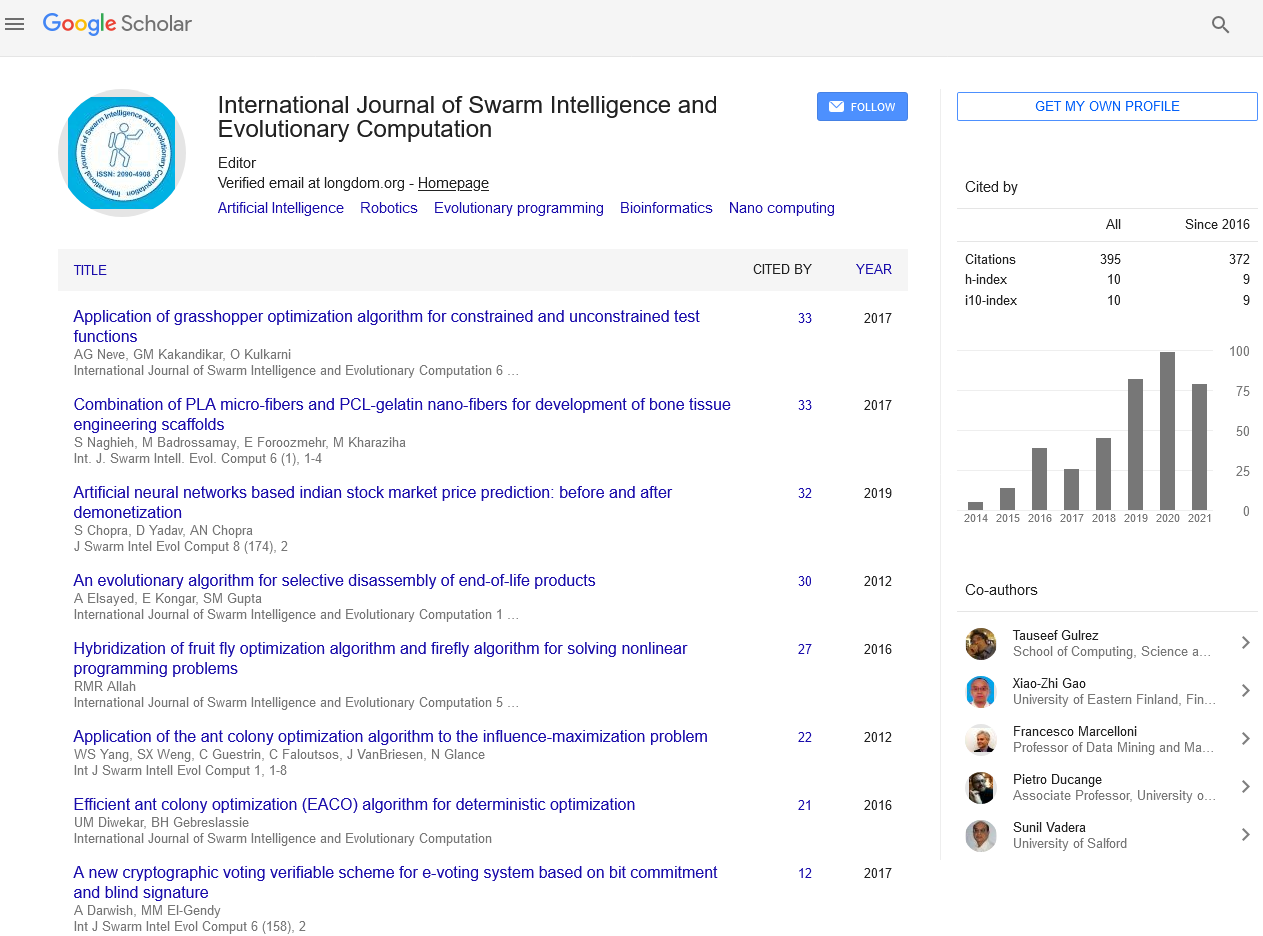Indexed In
- Genamics JournalSeek
- RefSeek
- Hamdard University
- EBSCO A-Z
- OCLC- WorldCat
- Publons
- Euro Pub
- Google Scholar
Useful Links
Share This Page
Journal Flyer

Open Access Journals
- Agri and Aquaculture
- Biochemistry
- Bioinformatics & Systems Biology
- Business & Management
- Chemistry
- Clinical Sciences
- Engineering
- Food & Nutrition
- General Science
- Genetics & Molecular Biology
- Immunology & Microbiology
- Medical Sciences
- Neuroscience & Psychology
- Nursing & Health Care
- Pharmaceutical Sciences
Editorial - (2021) Volume 10, Issue 2
Executive Summary on Working of Artificial Intelligence (AI)
Benjamin K*Received: 02-Feb-2021 Published: 25-Feb-2021, DOI: 10.35248/2090-4908.21.10.e204
Description
Unlike the natural intelligence displayed by humans and animals, which involves consciousness and emotionality, AI is wide-ranging branch of computing related with building smart machines capable of performing tasks that generally require human intelligence. AI is an interdisciplinary science with multiple approaches, but advancements in machine learning and deep learning are creating a paradigm shift in virtually every sector of the tech industry.
Artificial intelligence (AI) helps machines to seek out from experience, suits new inputs and performs human-like tasks. Most AI examples that you just simply hear about today from chess-playing computers to self-driving cars rely heavily on deep learning and tongue processing. Using these technologies, computers are often trained to accomplish specific tasks by processing large amounts of data and recognizing patterns within the info.
The term AI was coined in 1956, but AI has become more popular today thanks to increased data volumes, advanced algorithms, and enhancements in computing power and storage.
.While Hollywood movies and fantasy novels depict AI as human-like robots that take over the earth, the current evolution of AI technologies isn’t that scary or quite smart. Instead, AI has evolved to provide numerous benefits in every industry.
AI working
AI works by combining large amounts of information with fast processing and intelligent algorithms, allowing the software to search out automatically from the patterns or features within the info. AI could also be a broad field which includes many theories, methods and technologies, also because the subsequent major subfields:
Machine learning
ML focuses on the event of algorithms which can analyses data and make predictions.
It uses methods from neural networks, operations, statistics, research and physics to hunt out hidden insights in data without explicitly being programmed for where to look or what to conclude. Beyond getting wont to predict what Netflix movies you'd possibly like, or the best route for your Uber, machine learning is being applied to healthcare, pharma, and life sciences industries to help disease diagnosis, medical image interpretation, and accelerate drug development.
A Neural network
Neural networks are computer systems modeled after neural connections within the human brain. The synthetic equivalent of a personality's neuron could also be a perceptron. A touch like bundles of neurons create neural networks within the brain, stacks of perceptron create artificial neural networks in computer systems. This process analyses data repeatedly to hunt out associations and provides planning to previously undefined data. Through different learning models, like positive reinforcement, the machine is taught it's successfully identified the thing.
Deep learning
Deep learning uses huge neural networks with many layers of processing units, taking advantage of advances in computing power and improved training techniques to search out out complex patterns in large amounts of information. Common applications include image and speech recognition.
Natural language processing
Natural Language Processing (NLP), allows computers to interpret, recognize, and produce human language and speech. The last word goal of NLP is to enable seamless interaction with the machines we use on a daily basis by teaching systems to understand human language in context and produce logical responses.
Cognitive computing
Cognitive computing is also a subfield of AI that strives for a natural, human-like interaction with machines. Using AI and cognitive computing, the last word goal is for a machine to simulate human processes through the facility to interpret images and speech then speak coherently in response.
Computer vision
Computer vision is also a method that implements deep learning and pattern identification to interpret the content of an image; including the graphs, tables, and pictures within PDF documents, also as, other text and video. Computer vision is an integral field of AI, enabling computers to identify process and interpret visual data.
How AI is getting used
Health Care: AI applications can provide personalized medicine and X-ray readings. Personal health care assistants can act as life coaches, reminding you to want your pills, exercise or eat healthier.
Manufacturing: AI can analyses factory IoT data because it streams from connected equipment to forecast expected load and demand using recurrent networks, a particular form of deep learning network used with sequence data.
Banking: AI enhances the speed, precision and effectiveness of human efforts. In financial institutions, AI techniques are often used to identify which transactions are likely to be fraudulent, adopt fast and accurate credit scoring, also as automate manually intense data management tasks.
Retail: AI provides virtual shopping capabilities that provide personalized recommendations and discuss purchase options with the customer. Stock management and site layout technologies also are going to be improved with AI.
Citation: Benjamin K (2021) Executive Summary on Working of Artificial Intelligence (AI). Int J Swarm Evol Comput. 10:e204.
Copyright: © 2021 Benjamin K. This is an open-access article distributed under the terms of the Creative Commons Attribution License, which permits unrestricted use, distribution, and reproduction in any medium, provided the original author and source are credited.


